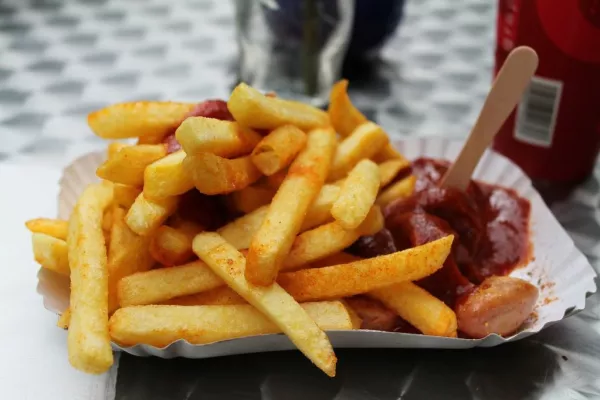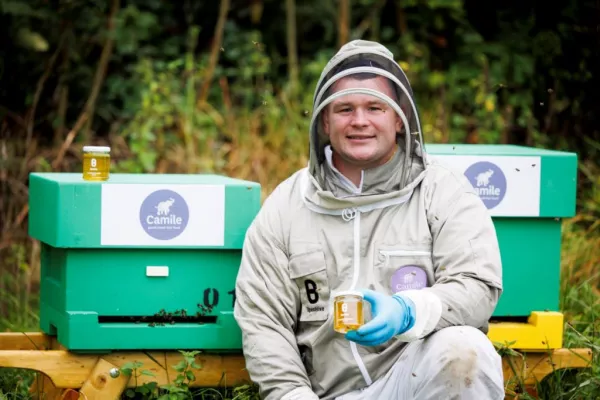With delivery and to-go orders soaring during the pandemic, marketing products as 'crispy' is risky if the food arrives at consumers' homes limp and listless. In a quest to maintain the crunch as long as possible, many US fast-food chains are tweaking their recipes, trying different additives, formulations, cooking techniques and temperatures.
Delivery orders at US restaurants were 154% higher in January 2021 than they were a year earlier, according to data analytics firm The NPD Group/CREST.
Delivery comprised 12% of all restaurant orders in January 2021, versus just 5% a year prior. A chicken-fingers-and-fries combo was the top food item ordered for delivery in 2020 by third-party delivery service DoorDash Inc.
But crispier food can cost more. A 30-pound box of the cheapest french-fries can run about $12 to $15 wholesale to restaurants, according to Barry Friends, a partner at food industry consultant Pentallect. Top tier fries made with drier, higher-quality potatoes and sealants can run up to $45 a box.
New Products
White Castle, with roughly 375 locations across the US, is "testing a different fry to see if we can get something that does hold up longer, stays crispier," Chief Operations Officer Jeff Carper told Reuters. Starting late last year, the chain tested a new fry which costs more than its current fries, at about 60 locations through New York and New Jersey, he said.
One McDonald's franchisee told Reuters its fries stay fresh about seven minutes after coming out of the fryer. "We have a lot of work to do here" to make food that travels better, the franchisee said. "Delivery business is growing leaps and bounds."
In a March video review of new fried chicken sandwiches from major chains, Restaurant Business magazine editor-in-chief Jonathan Maze said McDonald's Crispy Chicken sandwich is "not as crisp as the name would have you believe," though he thought it was "a very nicely done piece of chicken."
Two suppliers to McDonald's - both of which also supply other chains - told Reuters in early February that McDonald's was trying new formulations for breading, hoping to devise a coating that can help its chicken patties stay crunchy longer.
The world's largest restaurant chain denied that any such "official tests" for were underway for its chicken or fries, but noted that it did introduce foil pouches to keep its new chicken sandwiches fresher for longer.
'Crispy On Delivery'
Potato processor Lamb Weston Holdings Inc, which sells fries to McDonald's and KFC-owner Yum Brands Inc, markets "Crispy on Delivery" fries developed in 2018, that it claims have a "revolutionary coating." The company told Reuters it has seen restaurants' demand for them quadruple in the three months to Jan. 31 from a year earlier.
Lamb Weston also provides chains with store-to-door training on keeping fries crispy until they reach customers' homes.
"With so much riding on takeout and delivery, it's important your fries perform perfectly every time," Lamb Weston said in an advertisement in March targeting restaurants.
Ingredion Inc, which makes sweeteners and starches for sale to restaurants, told Reuters it developed a crispy outer coating for french fries that keeps oil from penetrating the potato upon frying and helps the potato retain moisture without getting slimy after delivery.
Such tactics helped Ingredion extend fry "freshness" to between 10 and 25 minutes, up from five minutes previously, "with a marginal but livable, reduction in crispiness," Greg Aloi, vice president of Ingredion's Customer Co-Creation & Innovation, claimed to Reuters.
Similarly, rival ingredient maker Kerry Group, said it was working on how to control gels on french fries, a byproduct of frying.
Changes In Temperature
"We had to understand the dynamics of the change in temperature over a longer time and...looking at how that gel needs to set up on the structure and how it will act over time from store to customer," said Albert McQuaid, chief innovation officer at the Ireland-based group.
As for chicken patties, major chains increasingly use flours made from plants such as fava beans and chickpeas to increase the crunchy texture, the two restaurant suppliers told Reuters.
Chains also add more starch and hydrocolloid-based gums such as xanthan and guar gum to retain the structure of the coating for longer, the suppliers said.
Friends, of Pentallect, said the smartest restaurants are now focused on this issue "because traveling food has now become a much, much more important part of the entire food service equation."
News by Reuters, edited by Hospitality Ireland. Click subscribe to sign up for the Hospitality Ireland print edition.









